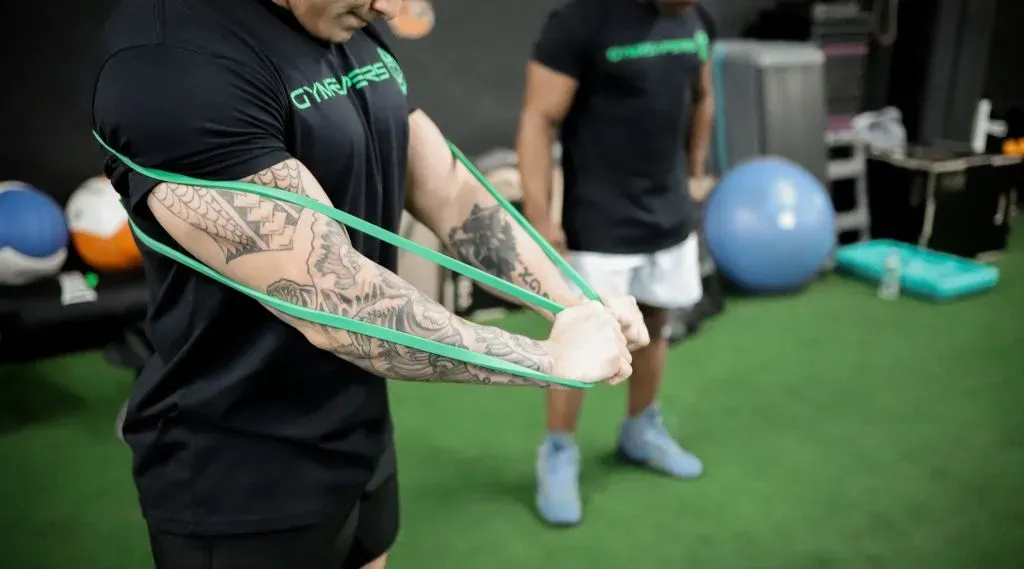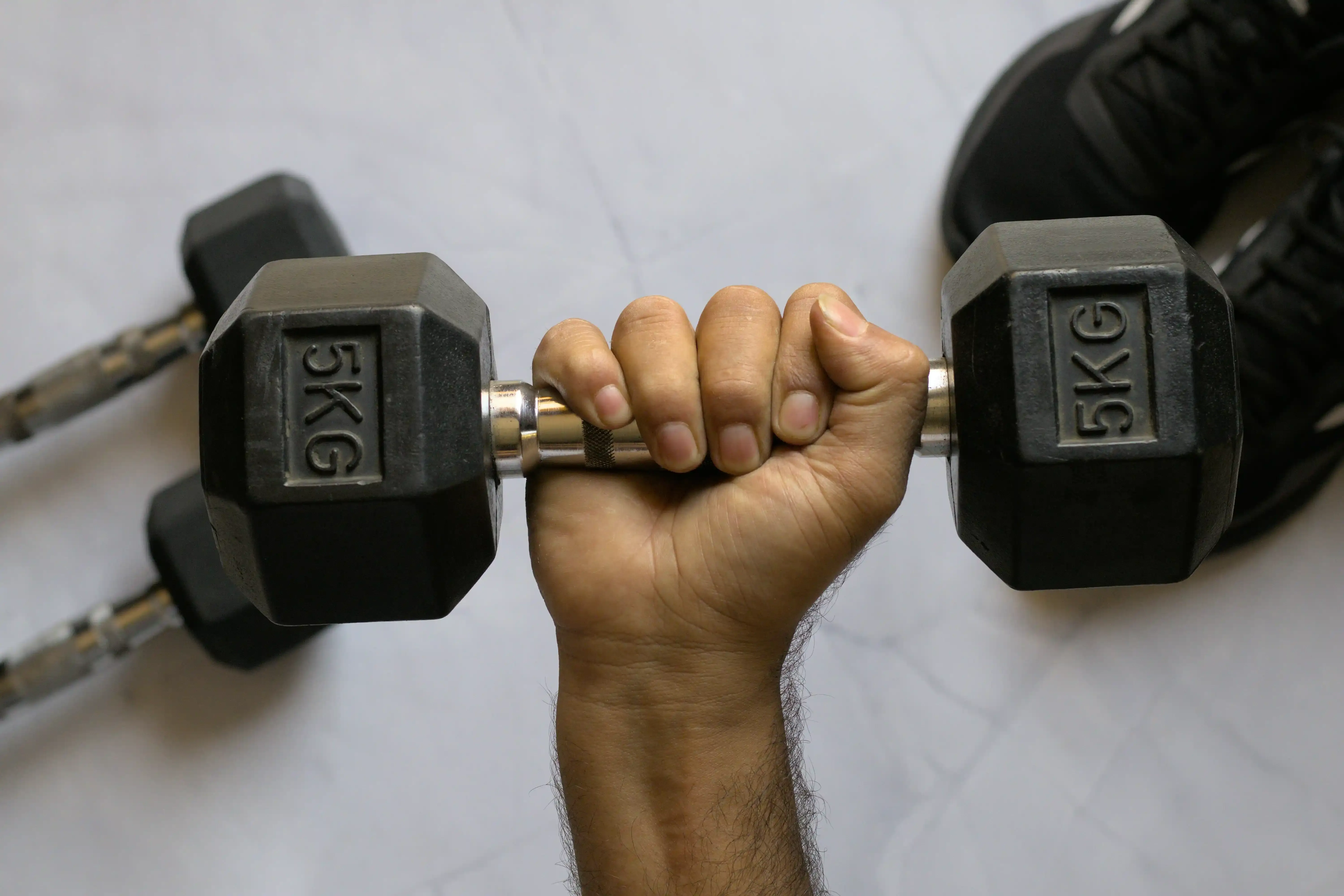Table of Contents
Let's be honest, getting to the gym isn't always easy. Life happens. Maybe you're short on time, travel a lot, or just prefer the comfort of your own space. But what about building that solid chest without heavy weights? If you've wondered how to effectively target your chest muscles outside of a traditional gym setting, you're in the right place.
Why Try Chest Exercises at Home with Resistance Bands?

Why Try Chest Exercises at Home with Resistance Bands?
Look, hitting your chest hard usually means bench presses, heavy dumbbells, or those cable machines that always seem to be occupied. But what if you could get a serious pec pump without any of that hassle? That's where **chest exercises at home resistance bands** come in. They aren't just some flimsy alternative; they offer a unique type of resistance that challenges your muscles differently than free weights. Bands provide tension throughout the entire range of motion, not just at the bottom of a lift. This linear variable resistance means the exercise gets harder as you stretch the band further, which can lead to some serious gains when done correctly. Plus, they're incredibly portable and take up zero space – perfect for a quick session before work or even on vacation.
Top Resistance Band Chest Exercises You Can Do Anywhere

Top Resistance Band Chest Exercises You Can Do Anywhere
Band Push-Ups: The Foundation
so you might think push-ups are just bodyweight, right? Wrong. You can seriously level them up with a band. Loop a resistance band around your back and hook each end under your hands. Get into your standard push-up position. As you lower yourself, the band stretches slightly, but the real magic happens on the way up. The band pulls against you, making the push phase significantly harder, especially at the top where the band is most stretched. It’s a fantastic way to add extra resistance without needing a partner to pile plates on your back.
Standing Band Chest Press: Mimicking the Bench
Imagine a standing bench press. That's essentially what this is. Anchor your band securely behind you, maybe around a sturdy pole or even a closed door (use a door anchor!). Grab the handles, step forward to create tension, and press your hands straight out in front of your chest, just like you would on a bench. Keep your core tight so you don't get pulled backward. This hits the chest, shoulders, and triceps, giving you that big pressing movement feel anywhere.
Think about the squeeze at the end. That's where the band tension is usually highest, forcing your chest to work harder through the lockout.
Which exercise feels harder for you at the top of the movement: a traditional dumbbell press or a resistance band chest press?
Band Chest Flyes: Opening Up Your Pecs
Flies are crucial for hitting the outer sweep of the chest. With bands, you can do these standing or even lying down if you have a sturdy anchor point low to the ground. If standing, anchor the band behind you again, one handle in each hand. With a slight bend in your elbows, bring your hands together in front of your chest, squeezing your pecs. Control the movement as you slowly open your arms back up. It’s less stress on your joints than heavy dumbbell flies but still gives you that great stretching and squeezing sensation.
Here are a few common resistance band types and what they're great for:
- **Loop Bands (Power Bands):** Thick, continuous loops. Great for push-up assistance/resistance, pull-ups, and full-body strength.
- **Tube Bands with Handles:** Often come with attachments. Ideal for presses, rows, and exercises mimicking gym machines.
- **Mini Bands:** Small loops. Perfect for glute work, shoulder prehab, and adding resistance to bodyweight squats.
Structuring Your Resistance Band Chest Workout at Home

Structuring Your Resistance Band Chest Workout at Home
So, you've got your bands and a few exercises in mind. Great. Now, how do you string them together into a proper workout? **Structuring Your Resistance Band Chest Workout at Home** is key to seeing results. Think about hitting your chest from different angles: pressing straight out, pressing upwards, and performing flyes. A solid session might start with a compound movement like the band push-up or standing chest press to work multiple muscles, followed by isolation exercises like band flyes to really target the pecs. Don't just randomly pick exercises; build a routine with sets and reps that challenge you. For building muscle, aim for 3-4 sets of 10-15 repetitions for most exercises, focusing on controlled movement and that peak contraction when the band is stretched tight.
Safety and Getting Results from Chest Exercises at Home Resistance Bands

Safety and Getting Results from Chest Exercises at Home Resistance Bands
Inspect Your Gear Before You Start
before you go stretching a band to its limit and potentially launching it across the room (trust me, it happens), you absolutely have to check your equipment. Resistance bands aren't indestructible. Look for any nicks, tears, or weak spots, especially near the handles or anchor points. A compromised band is a safety hazard waiting to happen. Also, make sure whatever you're anchoring the band to is solid. A flimsy chair leg isn't going to cut it for **chest exercises at home resistance bands**. Think heavy furniture, a sturdy door with a proper anchor, or a dedicated wall mount. You don't want your anchor giving way mid-press.
Control the Movement, Don't Just Snap It
It's easy to let the band's tension dictate your speed, especially on the eccentric (lowering) phase. Don't do that. The real benefit of bands comes from controlling the resistance through the full range of motion. Think slow and controlled on the way out, squeezing your chest hard, and even slower on the way back as you resist the band pulling you. This eccentric control is crucial for muscle growth and preventing injury. Jerky, fast movements with bands are a recipe for pulled muscles or snapped equipment. Focus on feeling the muscles work, not just getting through the reps.
Here's a quick safety checklist:
- Check bands for damage (nicks, tears).
- Ensure anchor points are secure and stable.
- Use door anchors correctly if applicable.
- Never stretch a band beyond its intended capacity.
- Keep pets and children away from your workout area.
- Perform movements slowly and with control.
Consistency and Progression Drive Results
Just like with weights, doing a few random **chest exercises at home resistance bands** here and there isn't going to magically build a sculpted chest. You need consistency. Aim for 2-3 chest workouts per week, allowing rest days in between. And you need to progress. As you get stronger, your current bands will feel easier. That's your cue to either increase the resistance (use a thicker band, double up bands, or increase tension by stepping further away from the anchor) or increase the number of reps or sets. Keep challenging yourself, and those at-home chest gains will definitely show up.
Wrapping Up Your Resistance Band Chest Workouts
So, there you have it. Building a strong, well-defined chest doesn't require a gym membership or stacks of iron. As we've seen, incorporating chest exercises at home with resistance bands offers a legitimate path to strength and muscle development. They provide a unique challenge, are easy to store and transport, and can fit into even the busiest schedule. Consistency, proper form, and gradually increasing resistance are key, just like with any training method. Give these band exercises a shot and see the results for yourself.
